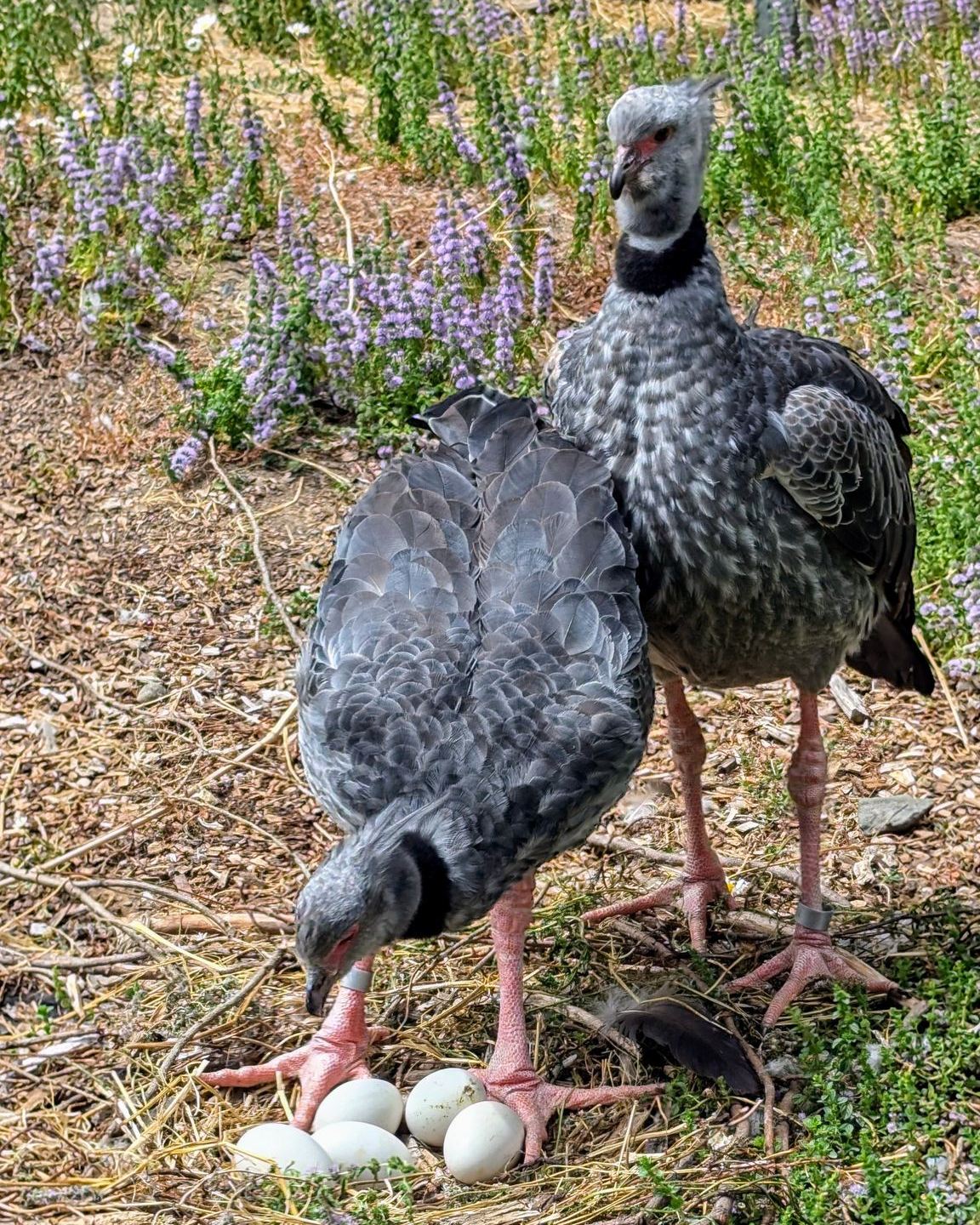- Natural history and behaviors of the crested screamer
- Details of Ivana Screamalot’s latest clutch and what it signifies
- Incubation practices and parental care in screamers
- Timeline and expectations for the hatching period
- Conservation significance and challenges for crested screamers
Crested screamers, native to South America, are known for their loud calls and unique appearance. With striking plumage and an imposing crest, they are easily recognizable. These birds inhabit swamps, marshes, and other wetland areas where they feed primarily on plant material. Despite their size and somewhat clumsy appearance on land, crested screamers are excellent swimmers and strong fliers.
The latest excitement surrounding Ivana Screamalot, a crested screamer at the zoo, owes to her laying of five eggs—a promising contribution to the species’ population. This occurrence is noteworthy both for its immediate effect and its broader implications for crested screamer conservation. Ivana and her mate, Boris, are given the opportunity to exhibit their natural behaviors, reinforcing the importance of naturalistic husbandry practices in zoo management.
Incubation in crested screamers involves both parents, with Boris and Ivana taking turns ensuring the eggs are kept at the optimal temperature. This bi-parental care is crucial for the successful development of the embryos. Unlike some species where fertility can be assessed through candling or other methods, crested screamers’ eggs’ fertility remains a mystery until hatching. The hatching window for Ivana’s clutch is projected to be between August 30 and September 2, a period eagerly anticipated by zoo staff and enthusiasts alike.
Throughout the incubation period, zoo keepers closely monitor the parents and the nest, looking for any signs of distress or abnormal behavior. The hands-off approach, however, allows Boris and Ivana to engage in their natural nesting and brooding behaviors, which can enhance their wellbeing and the health of the chicks.
The potential hatching of this clutch is significant for several reasons. First, each successful hatch adds to the genetic diversity and population of crested screamers in captivity, which can be critical for future reintroduction efforts. Second, it provides valuable data on breeding and offspring rearing behaviors, contributing to our overall knowledge and improving future breeding success.
Conservation of the crested screamer is not without its challenges. Habitat loss due to wetland drainage and conversion for agriculture is a significant threat. Protecting and restoring these habitats is essential for the survival of the species. Zoos play a vital role in these efforts by maintaining healthy captive populations and fostering public awareness and support for conservation.
The anticipation around Ivana Screamalot’s eggs encapsulates the intricate relationships between zoo management, wildlife conservation, and public education. Each hatching event serves as a reminder of the importance of preserving our planet’s biodiversity and the efforts required to achieve this goal.
As the days inch closer to the expected hatch dates, the excitement builds. The zoo community, alongside visitors, waits with bated breath, hoping for the successful arrival of new crested screamers. The journey from egg to chick is a microcosm of the broader conservation journey—a testament to the dedication and hard work of everyone involved in the preservation of these remarkable birds.
*****
Source Description
Another Egg-cellent update! 🥚🥚🥚🥚🥚
As a final tally Ivana Screamalot the crested screamer laid 5 eggs total for this year’s clutch.
For crested screamers, we typically allow the parents to incubate and raise their chicks so we will not know if eggs are fertile until their hatch dates. For this clutch the hatch range will be around August 30-September 2nd.
We’ll be counting the days until the grand reveal but until then good luck to Boris and Ivana Screamalot!


